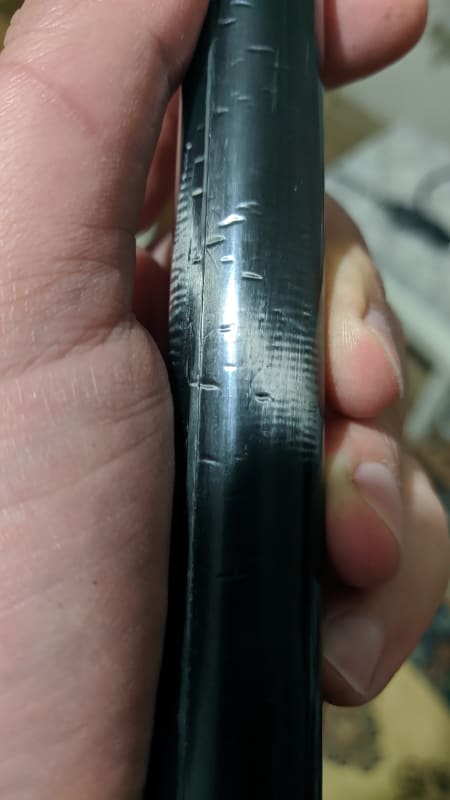Hello friends. I'm new among you.
I make products for various R&D projects. I produce the products in molds made of aluminum and steel. I use blow molding technique in production.
The firm I worked for asked me to make a hollow bar with UD on the outermost surface. However, I am having the problem appearing in the pictures. Has anyone encountered this problem before?
I would be grateful if you could help me with how I can fix it.
My technique;
40 °C --> 4 Bar pressure
60 °C --> 6 Bar pressure
80 °C --> 8 Bar pressure
100 °C --> 10 Bar pressure
I turn off the heating at 135 °C degrees.
20 minutes later; I take it to the cooling pool.

I make products for various R&D projects. I produce the products in molds made of aluminum and steel. I use blow molding technique in production.
The firm I worked for asked me to make a hollow bar with UD on the outermost surface. However, I am having the problem appearing in the pictures. Has anyone encountered this problem before?
I would be grateful if you could help me with how I can fix it.
My technique;
40 °C --> 4 Bar pressure
60 °C --> 6 Bar pressure
80 °C --> 8 Bar pressure
100 °C --> 10 Bar pressure
I turn off the heating at 135 °C degrees.
20 minutes later; I take it to the cooling pool.

